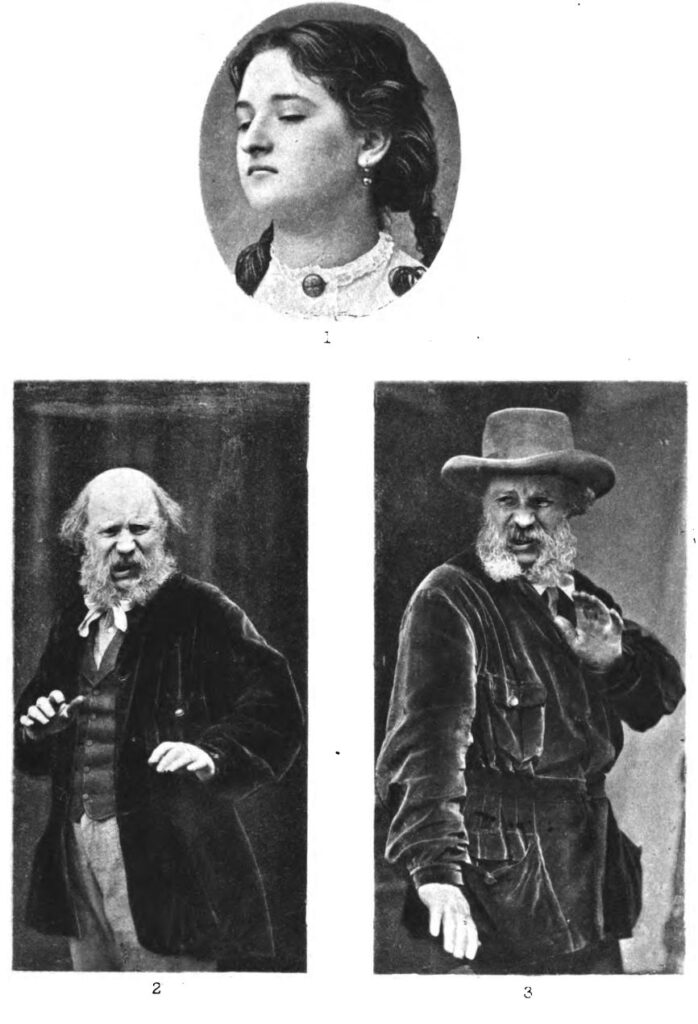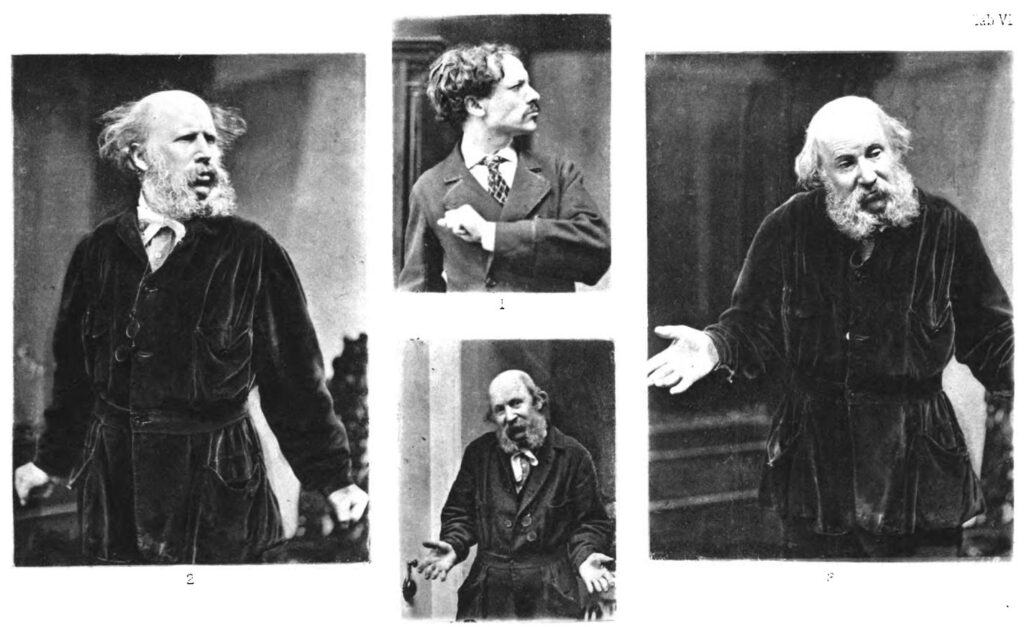
First known as a painter and lithographer, Oscar Gustave Rejlander pioneered the practice of combination printing, a photographic technique in which two or more negatives are used to create a single print. After studying art and antiquity in Rome, Rejlander settled in England, exhibiting his paintings at the Royal Academy in 1848. He learned photography from Nicholas Henneman in 1853. In 1857 and 58 he exhibited his Two Ways of Life, a large allegorical study, at the Manchester Art Treasures Exhibition and at the Photographic Society of London. He met Henry pEach Robinson in 1858 and introduced him to his techniques. Rejlander established a studio in London in 1862 and subsequently concentrated on portrait work; his sitters included Lewis Carroll and Gustave Dore. In 1871-72 he produced the illustrations for Charles Darwin’s The Expression of the Emotions in Man and Animals.
‘Two Ways of Life’

The image above seems like a simple composition showing a tableaux image but The Two Ways of Life was one of the most ambitious and controversial photographs of the nineteenth century. The picture is an elaborate allegory of the choice between vice and virtue, represented by a bearded sage leading two young men from the countryside onto the stage of life. The rebellious youth at left rushes eagerly toward the dissolute pleasures of lust, gambling, and idleness; his wiser counterpart chooses the righteous path of religion, marriage, and good works. Because it would have been impossible to capture a scene of such extravagant complexity in a single exposure, Rejlander photographed each model and background section separately, yielding about thirty-two negatives, which he meticulously combined into a single large print.
The photograph made me think about a possible effect that I could try when editing my images. As it was made through combination printing, I thought that perhaps one image could be pieced together from a series of photographs that join together in many different ways. Perhaps a portrait or still life that I want top photograph to create this combined print. This pioneering photograph was such an achievement that I should produce some kind of outcome in relation to it. It is key piece from the history of photography and with the project being about my own theatrical life, it seems fitting to include such a big part of Rejlander’s work in my own history.
‘The Expression of the Emotions in Man and Animals’
https://www.gutenberg.org/files/1227/1227-h/1227-h.htm
Charles Darwin produced this book as a scientific exploration of how humans and animals express emotions and why, a topic that coincides with his theory of evolution and natural selection.
“I must have the pleasure of expressing my obligations to Mr. Rejlander for the trouble which he has taken in photographing for me various expressions and gestures.”

Working with Charles Darwin in the latter years of his, Rejlander produced these images above. These very stylised emotions and positions that Rejlander himself posed as appeals to my study greatly. It is a very clear aspect of acting and although used by Darwin for scientific purposes, coincides perfectly with my project.

The plate of images above are used in Chapter X of Darwin’s The Expression of the Emotions in Man and Animals titled ‘Hatred and Anger’. These heliotype images clearly describe the heightened expressions of human emotions, something every actor learns as their first lesson. Expressing strong emotions are essential to my life and therefore, by producing images similar to these, I believe that portraits created would be perfect for my project.

“The mouth is commonly compressed, and there is almost always a frown on the brow. Instead of the frantic gestures of extreme rage, an indignant man unconsciously throws himself into an attitude ready for attacking or striking his enemy, whom he will perhaps scan from head to foot in defiance. He carries his head erect, with his chest well expanded, and the feet planted firmly on the ground. He holds his arms in various positions, with one or both elbows squared, or with the arms rigidly suspended by his sides. With Europeans the fists are commonly clenched.” – Darwin’s description of Indignation, clearly shown in Rejlander’s image.
